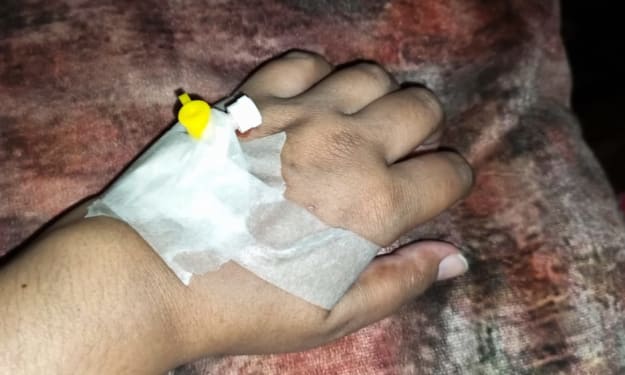Pride and Proud: Refracting Odyssey of the Rainbow Community
“Bakla, bakla, paano ka ginawa?”

If we will be traveling back to the history of the Lesbian, Gay, Bisexual, Transgender, Queer, Intersex, Ally (LGBTQIA+) Community in the Philippines; We can fully see a tremendous proliferation of rainbow mediums to represent it.
We can see a huge bow in the sky after or during rains. It appears only when the sun rises, leaving us to wonder what is inside. Though we keep looking for it, there's a chance that we won't find it, even if we are standing directly under the downpour; The greatest thing to do is to go outside in the sun and gaze up at the sky.
A rainbow represents hope because it follows every storm, seeing a rainbow after rain gives us an incredible sense of joy. In connection, rainbow is also one of the inspiration of the joyful and colorful community: LGBTQIA+ Community. It serves as the representation of the majestic part of the society—its radiating colors represents the inclusivity, diversity, equality, and authenticity as a whole persona of the this amity.
In the Philippines, we are also open and aware that this community is existing. However, our country is still in the process of accepting—the progress that we continue to fight for.
PRIDE AND PROUD
The Metro Manila Pride March was a pioneer in the Asian area, first staged in June 1994 at the Quezon Memorial Circle in Quezon City. It was organized, like the rest of the Pride Marches throughout the world, to remember the 1969 Stonewall Riots, a pivotal event in the LGBTQ+ movement. It was later changed to December in 2003 to correspond with other important LGBTQ+ calendar days, including World AIDS Day (December 1), National Lesbian Day (December 8), and International Human Rights Day (December 10).
The Pride March was later transformed into Pride Season, a six-month celebration of pride and diversity. The date was changed back to June in 2015. Since the 1990s, the Metro Manila Pride March has carried the struggle to the streets of Quezon City's Morato, Manila's Malate and Rizal Park, and, most recently, Marikina City. It also prompted additional regional Pride gatherings around the Philippines.
Centrally, joining a Pride March in June is almost second nature for many members of the Filipino LGBTQ+ community. While the LGBT spirit shines brighter than ever in each Pride March, our festivities are constantly overshadowed by the fact that many of us continue to face prejudice and persecution – something that many of our brothers and sisters who only think of Pride as a parade have forgotten.
History: Refracting Odyssey of the Rainbow Community
Who would have thought that even in the pre-colonial era—we we’re able to establish a strong foundation of the rainbow community. It all started with the Babaylans; males who crossed genders.
A Babaylan is a woman (or man) who has the capacity to commune with the spirit realm, has her own spirit guides, and is endowed with healing, foretelling, and insight. She may also be familiar with healing techniques such as hilot and arbularyo. She is a diviner, chanter, and ritualist. She possesses the ability to go to the spirit world or other realms of reality in order to mediate with the spirits.
Babaylans are also known as Mombaki, Dawac, Balyan or Balian, Katalonan, Ma-Aram, Mangngallag, Mumbaki, and Mambunong in the indigenous languages of the Philippines. If the datus possessed deep knowledge of black magic, the babaylans specialized in harnessing nature's infinite powers, which they employed for both good and evil.
Fundamentally, the gay community are existing even before—we have been together for a long time. However, the prejudices, stereotypes, and judgement towards the community is something that hinders us to be fathomed by the society.
Fast forward to the martial law, during the Martial Law the LGBT Community were harassed and tortured. Under the leadership of Imelda Marcos, she herself published anti-gay books, sand so many LGBT members also left the country at that time.
After the horrific nightmare of the martial law. In 1980s, here that once again began to fight and establish progressive propaganda towards the LGBTQIA+ Community in the country. A film entitled Manila by Night directed by Ishmael Bernal showed an LGBT character in the plot of the film. Bea (Rio Locsin) works in a blind massage parlor, and her best friend Kano (Cherie Gil) is a drug-addicted lesbian. Small thing compared to our representation today, but it was big impact then.
As the rainbow community continue to refracts its colors, on June 26, 1994, more than 30 members of the Philippine-based LGBT+ organizations Progressive Organization of Gays and the Protestant Christian denomination Metropolitan Manila Church of Manila marched in Quezon City to commemorate the 25th anniversary of the Stonewall Riots.Radically, dubbed 'Stonewall Manila,' was inspired by the 1969 Stonewall, New York demonstration, which became one of the pivotal events that defined the worldwide LGBT+ freedom movement.
Rationalizing our country as a catholic dynasty, but this did not hinder our progress. In July 2013, Pope Francis was cited as stating (in Italian), "If someone is homosexual and seeks the Lord and has good will, who am I to judge?" The term "gay" was used in the speech. Local religious networks grew more inclusive and tolerant as well. The United Church of Christ in the Philippines issued a statement in December 2014 that "affirms that all of us, regardless of any category, are under the grace of God," which means that "LGBTs should not be discriminated against, but should be unconditionally accepted in the fellowship and membership of the Church."
In 27th of June 2015, The Metro Manila Pride held in Luneta Park reminded us that the LGBT rights are a fight for universal rights—“FIGHT FOR LOVE: IBA-IBA. SAMA-SAMA.” Metro Manila Pride is a non-partisan, volunteer-run group devoted to educating, enabling, and empowering Filipino LGBTQIA+ persons and communities to fight for a future that acknowledges and respects LGBTQIA+ people's rights to a decent existence free of prejudice and discrimination.
Years after a long battle, the SOGIE Bill was actually approved on the 16th of December 2020 in the senate panel after 20 years of being ignored. In spite of the entrenched bill, we can not deny the fact that the hostility of the world towards the community is still unprogressive.
Consequently, we’re still the one who will help and uplift the community. We even the one who made our own safe spaces. And these spaces are existing across the country: Manila, Cavite, Baguio, Cebu, Davao, and Zamboanga.
Currently, the acceptance towards the rainbow community is still fighting. In, 2020, we can see that the rise of LGBTQIA+ related series, movies, and dramas has been enjoyed by the masses: Gaya sa pelikula, Gameboys, Chasing Sunsets, Oh Mando!, Pearl Next Door, and many more.
We’ve come a long way, My friend! And I know that our final destination is still far and can only be reach at the end of that rainbow. So we must continue to fight. We must continue to strive—for equality, inclusivity, freedom of expression, and love.
Wholeheartedly, this is how the history of gayness we’re made in the Piilippines, this is our story, and this is how we were born.
About the Creator
John Rojell Y. Elizaga
Rojell is a graduating journalism student from the Polytechnic University of the Philippines. He is a community development worker and student leader that create stories for the masses—fueled by love for crafting compelling narratives.
Enjoyed the story? Support the Creator.
Subscribe for free to receive all their stories in your feed. You could also pledge your support or give them a one-off tip, letting them know you appreciate their work.






Comments
There are no comments for this story
Be the first to respond and start the conversation.